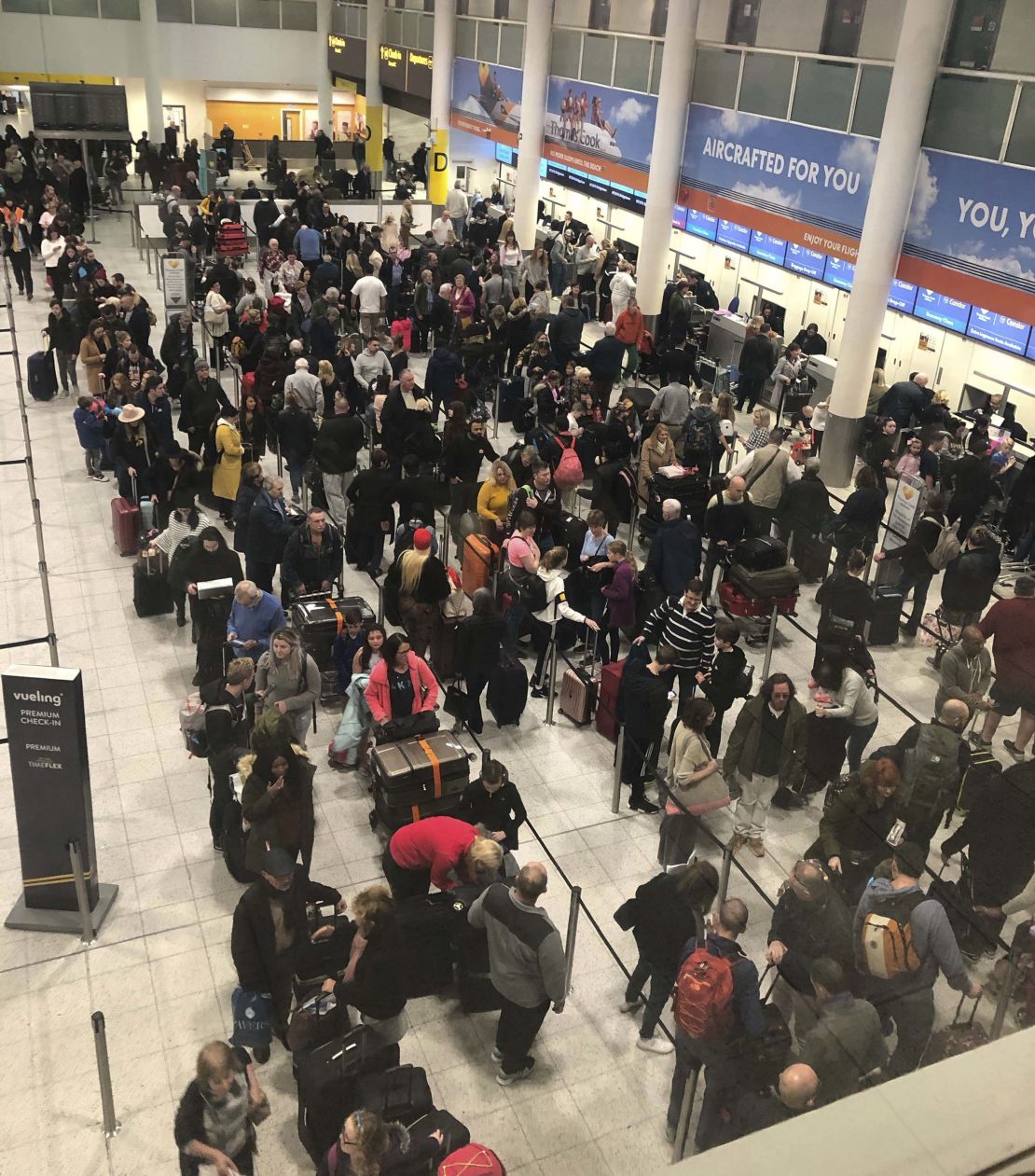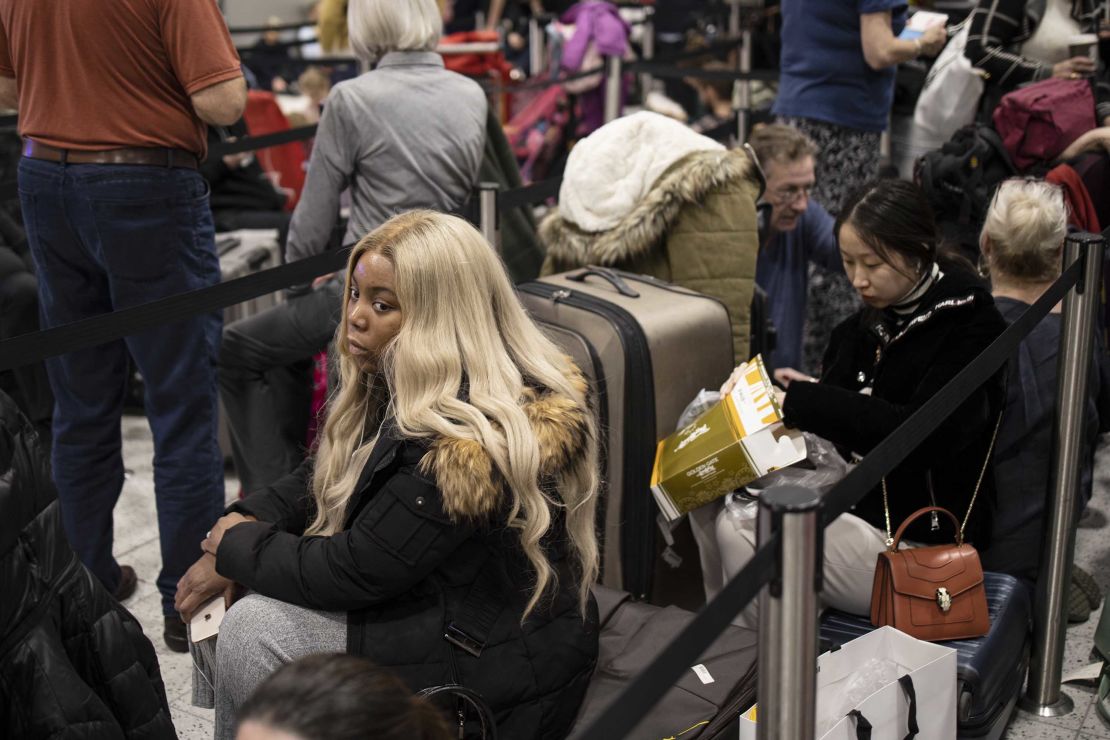Repeated disruption at Gatwick, the UK’s second-largest airport, due to “deliberate” drone incursions caused travel chaos for hundreds of thousands of passengers this week and left many more wondering how something like this could even happen in the first place.
Here’s a look at what risks drones pose to air travel.

Restrictions around airfields
While it is illegal to operate drones within 1 kilometer (0.6 miles) of a UK airfield boundary, there is nothing physically stopping pilots from doing so.
“There are laws within this country to prevent drones from flying within a certain distance from airports, but there are no effective countermeasures in place to prevent it in practice,” Philip Banks-Welsh, head of drone law at Royds Withy King law firm, told CNN. “At the moment the industry relies on users flying drones responsibly, which I’m afraid just isn’t good enough.”
The UK Civil Aviation Authority (CAA) says it is trying to tighten regulation of drones and there are calls for all drones to be registered; but that’s unlikely to happen anytime soon.
How can drones be stopped?
“The technology to counter these machines is in its infancy,” Matthew Whitfield, instructor at drone training company Flyby Technology and a former Royal Navy fighter pilot, told CNN.
Disabling a drone would require jamming the frequency between the controller and the drone itself. But the electromagnetic disturbance used to jam that signal would be nearly impossible to use at airports, as it would interfere with aircraft and communication systems.
While geofencing for sensitive locations, such as prisons, is already in operation it doesn’t always work – not all drones need GPS or Wi-Fi, and some can work using artificial intelligence.
“The other measure is the ability to triangulate where the person is standing, who is doing the flying. And that’s where our security services come in,” Whitfield said.

What could happen if an airplane hit a drone?
If a drone were to hit an aircraft’s wing, it would probably cause damage but no serious danger, according to the CAA. However, if a drone were ingested by an engine, it would be catastrophic.
Whitfield pointed out that every professional pilot is trained to handle a single engine failure, before adding: “Let’s say the drone is 7 kilos (15.4 lbs), going into the engine intake with a combination of plastic, batteries and minor metals, that would certainly take out the engine.”
Related: Flying of drones is ‘deliberate act’ to close Gatwick Airport, police say
Other risks include a direct collision with the fuselage or impact with the cockpit, which could crack the windscreen.
Whitfield said that hitting a drone could also be as inconsequential as the impacts planes often have with geese or hail, but it’s not worth the risk – especially when drones are difficult to see even in daylight.
“I don’t know any pilot that would launch a 300-ton aircraft out of Gatwick if there was a risk of collision with drone.”
What are the regulations for drones?
Drones up to 7 kilos (15.4 lbs) are allowed to fly in airspace controlled by air traffic controllers, but they must never be flown higher than 120 meters (about 400 feet), according to Jon Parker, founder of Flyby Technology and a former Royal Air Force fighter pilot.
They are not allowed to be flown farther than 500 meters (1,640 feet) from their operators either, despite many having huge ranges. Some of the more powerful drones can be controlled from up to 16 kilometers (10 miles) away.
Has anything like this happened before?
Banks-Welsh, who also served with the Royal Air Force, said the incident at Gatwick didn’t surprise him, but it was, in many ways, unprecedented.
“There have been near-miss incidents in the past, and (they have become) probably more prevalent over the last 6 months, I would say. There’s been a build-up towards this sort of incident. The incident in itself doesn’t surprise me, it was almost inevitable,” Banks-Welsh said.
“This incident seems to have entered into a whole different ball game in terms of the malicious intent, it’s pretty clear from the accounts I’ve seen that this individual or individuals were intentionally flying across the airspace to cause disruptions.”
What is the standard procedure for handling rogue drones?
Parker said the usual practice on spotting drones is to suspend flights for 30 minutes – their average battery lifespan. This means that whoever is responsible for the disruption at Gatwick likely brought their drones back to the ground to put in new batteries.
“Once drones are sighted over an airfield the authorities have no option but to suspend all flights. If they didn’t and it led to a disaster then they would be slated,” Parker said in a statement.
“We’ve seen nothing on this scale before although Manchester Airport did suspend all flights for a short time back in 2017 after a drone was seen.”
Are there any other fixes in the works?
The CAA are looking at a variety of solutions, among them, a mandatory app for drone operators to upload flight data.
Blockchain technology currently being tested by the US Department of Homeland Security (DHS) to secure data recorded at the Mexico border could also be applied to drones to create a live map of all legitimate flights. This would allow authorities to connect to and land any drones operating suspiciously.
Having flight data would also allow authorities to differentiate between legitimate, registered drones connected to the system and any operators attempting to circumvent it.
CNN’s Lewish Whyld contributed to this report.
